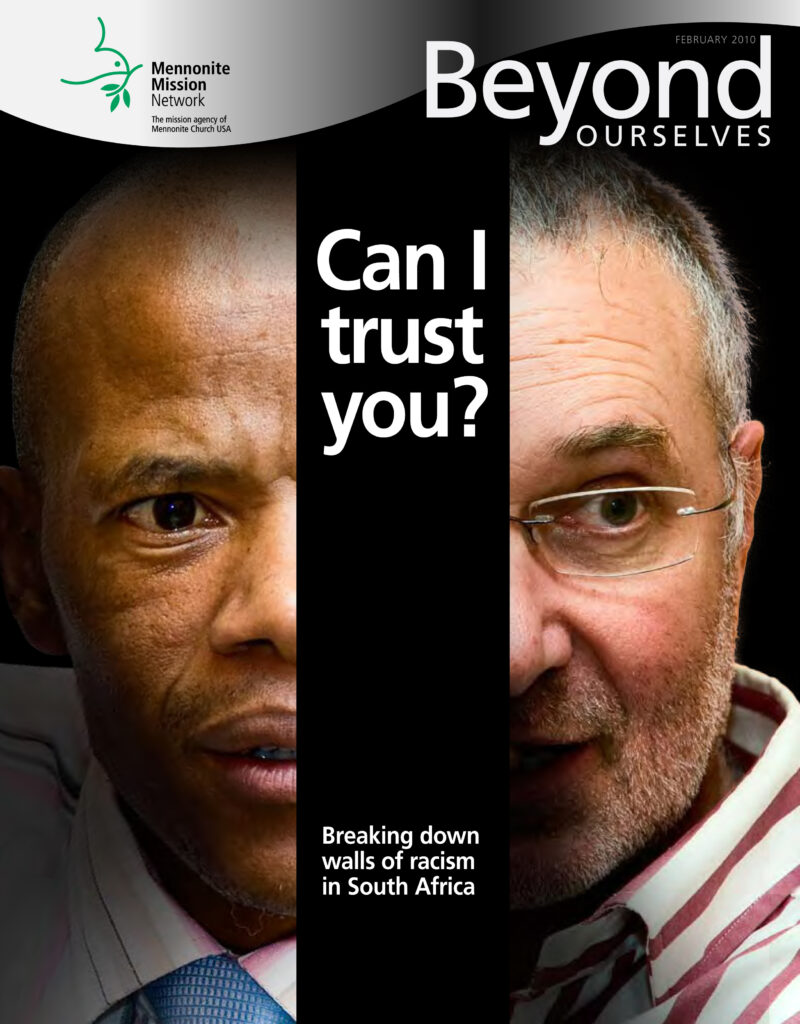Understanding the living Christ
By Ryan Miller
Xola Skosana (p. 6) challenges me. How do I read Christ and stories of Christ’s life? Do I, a member of a dominant culture, assume that I can understand Jesus through that cultural lens?
Lent is an appropriate time for this question. As Jesus spent 40 days away from the world as he understood it, so all of us might take this time to remove ourselves enough from our own experiences to reexamine how we receive the living Christ.
Many North Americans try to distance themselves from the broken Jesus through distractions and theologizing. Is it essential that North American Mennonites—especially those born into privilege due to skin color, gender, social status or wealth—experience Jesus’ brokenness? I believe so. Without this understanding, we are in danger of reducing Christ’s radical teachings to bumper sticker slogans on speeding cars. Recognizing Christ’s brokenness may help us notice places where injustices are codified into systems and hidden from obvious sight. And it might allow us to reframe mission to missional—from something sent faraway to a process of seeing God’s work where we are.
What kind of partnership ministries, then, can develop when the universal Jesus takes us through the dividing wall between oppressors and the oppressed? What walls does Jesus call us to demolish? What partnerships beckon us to greater faithfulness and joy?
And can we truly know the personal Jesus without recognizing the filters that alter our assumptions of what we might hear, see or feel?
Let us, this season, commit to spending time listening to one another and to God, that we might identify this Jesus who holds all things together in his reconciling love (Colossians 1:17-20) and how we are called to join God’s work in the world.
Correction: Due to an editor’s error, Corrine Jager’s name was misspelled in the October 2009 Beyond Ourselves.

